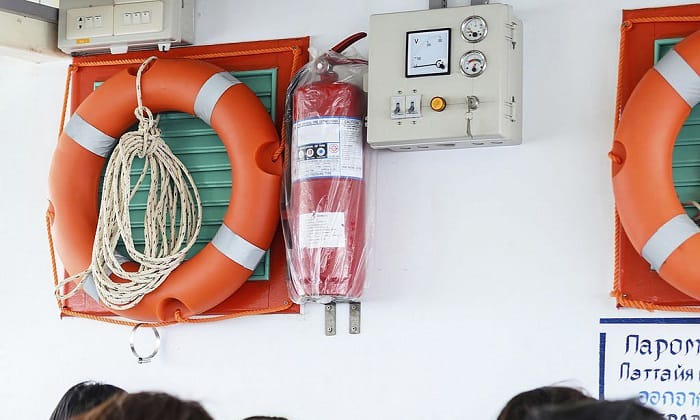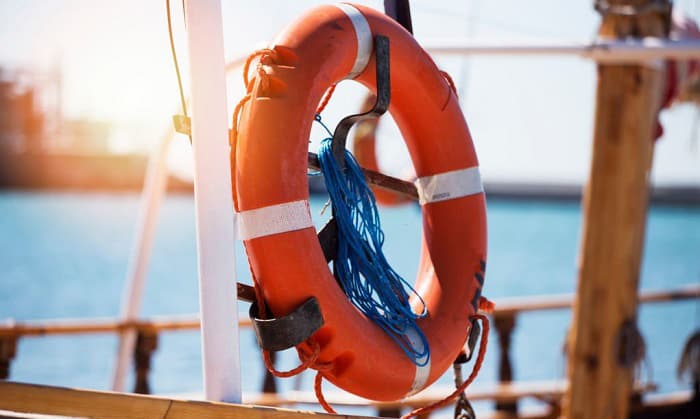We need different items for different boating activities. The bigger the boat, the more items are necessary, but on a 15 foot boat which object is required to be on board?
In this article, we’ll go over the specified coast guard requirements for boats, specifically for those around 15 feet in length. We’ll take a closer look at each one and briefly discuss their importance.
Keep reading to find out more.
Table of Contents
Item Requirements for Boats
The US Coast Guard specifies a list of item requirements for boats, and these items differ depending on the size of the boat. For this article, we’re focusing on boats that are 15 feet in length, but let’s also briefly go over the size ranges specified by the USCG that pertain to boat safety equipment requirements.
Boats 16 feet and below all have the same requirements, and this group includes our 15-foot boat. The next size bracket ranges from 16 to 26 feet, then 26 to 39 feet, with the last group being 40 to 64 feet. This list covers only recreational boats, and those exceeding 65 feet in length would usually not qualify as recreational.
As a final general note, all items must adhere to USCG specifications and must be approved. Having non-approved items on board will not only fail inspections, they may even be substandard items that fail when you need them most.
1. Personal Flotation Device
It is necessary to have one personal flotation device or life jacket for each person, whether they are on the boat or something being towed by the boat, such as those on tubes or water skis. Life jackets need to be those that are USCG approved, and specifications differ depending on whether they are for children or adults.
Each boat must also have one throwable personal flotation device. While this item may substitute for wearable floatation equipment in the past, it is now an absolute requirement for boats below 16 feet in length to have wearable PFDs.
2. Visual Distress Signal
Visual distress signals are required for boats of any size, but for 15-foot boats, only night signaling devices are required specifically for boat operation at night. Both pyrotechnic and non-pyrotechnic types are allowed, and there is no need to have both types onboard.
It should be noted, however, that a minimum of three is required for pyrotechnic devices, and they should not be beyond their expiration date.
Combining different types of visual distress signal devices is also an acceptable option. Refer to the USCG website for further guidance regarding this matter.
3. Sound Producing Device
A sound-producing device is another item requirement, and either bells or whistles are common choices. These are necessary to allow other boats or rescuers to locate your vessel.
A horn or siren is also an acceptable sound-producing device, though the most important characteristic of your device is that it must be capable of producing a 4-second blast of sound audible at a distance of up to one nautical mile, depending on the state.
4. Fire Extinguisher
When your boat is out on the water, you’re pretty much on your own, even during emergencies. Fires are among the most dangerous situations for boats since there is nowhere to go in such cases.
One B-1 fire extinguisher is required for 15-foot boats; B-1 fire extinguishers are USCG-approved fire extinguishers and are intended for use in marine situations. Regardless of the nature of the fire, the fire extinguishers on board need to be able to deal with the situation, and these extinguishers should do the trick.
5. Ventilation
A ventilation system is an additional requirement for boats that make use of gas engines, though there are differences depending on when the boat was built.
For boats built before 1980, there must be at least two ventilation ducts that are fitted with cowls. The ventilation must properly and effectively ventilate the bilge of the boat.
For boats built after 1980, in addition to the minimum two ventilation ducts with cowls, there also needs to be power-operated blowers, and they must be operable from the instrument panel.
6. Backfire Flame Arrestor
This is another requirement exclusive to boats with a gas inboard engine. The backfire flame arrestor is installed on each carburetor of the boat’s engine, and each device needs to be marked for compliance.
As we all know, boat fire is an extremely dangerous situation that we should always strive to avoid at all costs.
The backfire flame arrestor prevents flames (a result of engine backfire) from coming into contact with flammable materials such as fuel. This is done by cutting off the air supply in the carburetor, which kills the engine and in turn kills the flame.
Conclusion
You now know on a 15-foot boat which object is required to be on-board and have some degree of familiarity with each item and the importance of having them on hand. If you’d like to know more, refer to the USCG official website for more detailed information.
If you know anyone else wondering on a 15 foot boat which object is required to be on board, please share this article with them as well. Let’s spread the word and keep more people safe on the water.
Remember to boat safely.

“My intention from the first day establishing Boating Basics Online is to provide as much help as possible for boaters who want to experience a first safe and convenient trip. So feel free to join us and share your beautiful journeys to the sea!”


